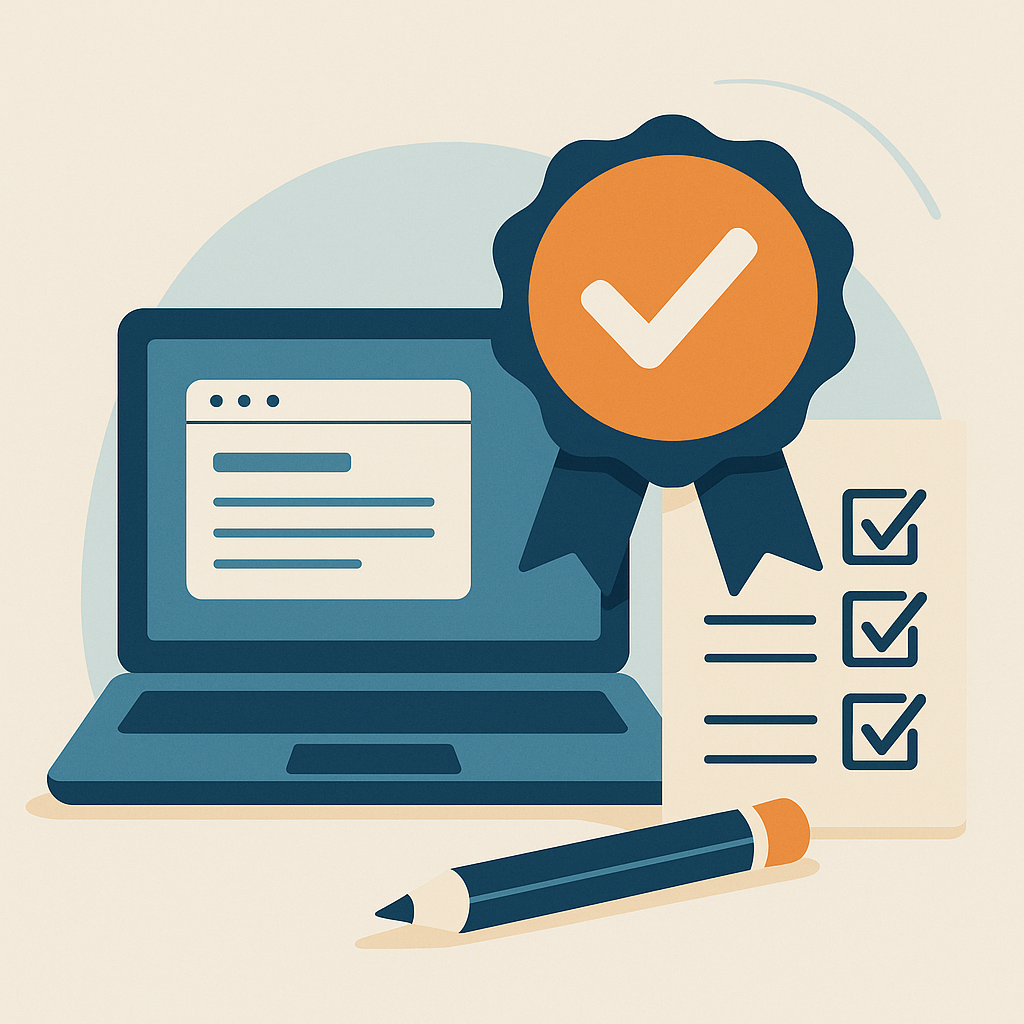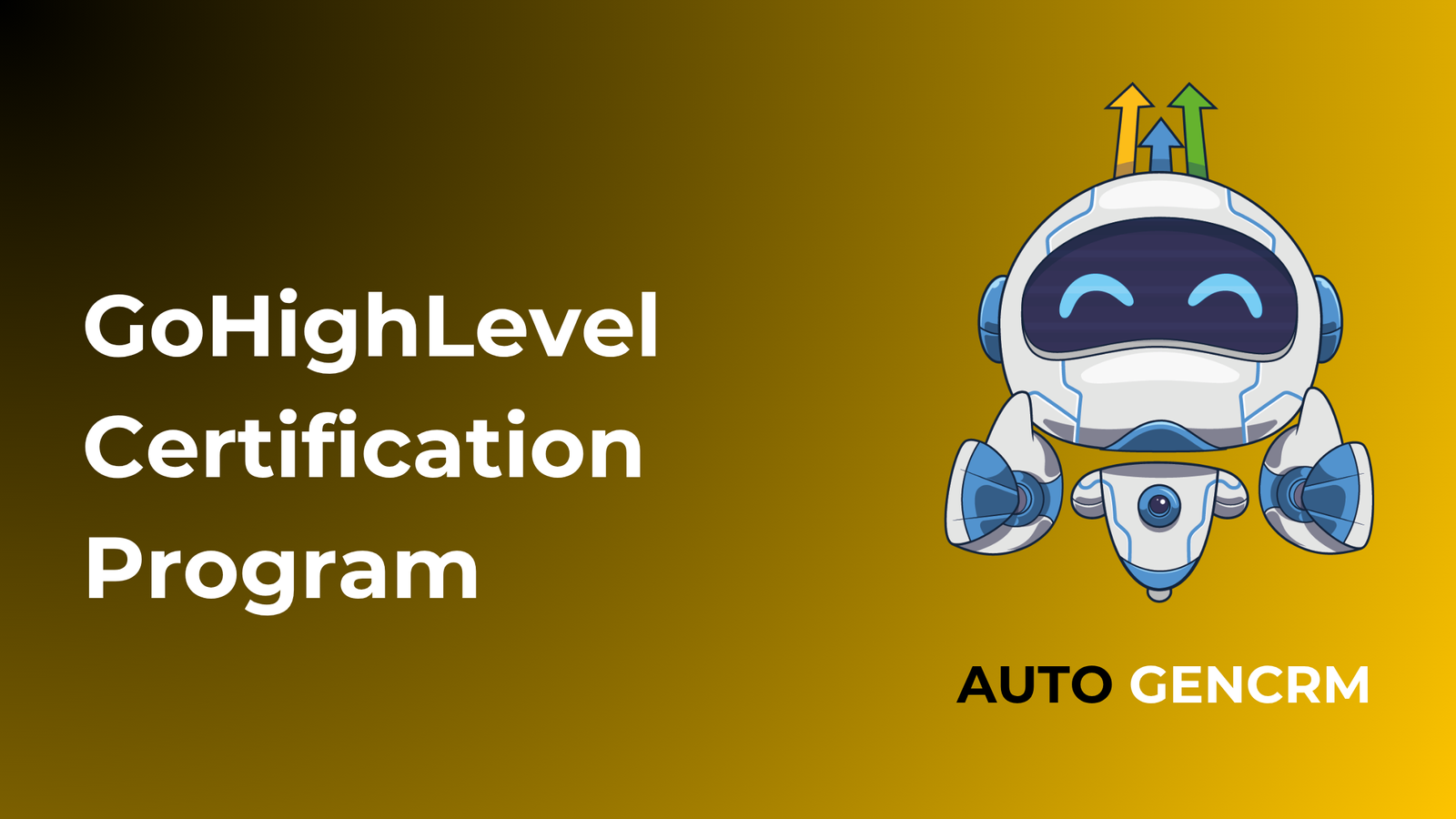The GoHighLevel Certification Program validates your skill with funnels, CRM, automation, calendars, and client delivery inside HighLevel. It gives you training, a clear skills checklist, and an assessment so clients and employers can trust your work. In this guide you will learn what the program covers, who should take it, how to prepare, and how to use the certificate to win more deals.
What the GoHighLevel Certification Program is
This program teaches and tests the core skills needed to build and manage real systems in HighLevel. You learn how to set up funnels and websites, map forms and custom fields, build workflows for email and SMS, connect calendars with reminders, track deals in pipelines, and read reports that tie to revenue. At the end you complete a skills test or a practical build to show that you can do the work.
Who should get certified
- Agency owners who want trusted delivery across many client accounts
- Freelancers who want proof of skill for funnels, workflows, and CRM
- In house marketers who run lead gen, bookings, and reactivation
- Tech support or ops staff who maintain sub accounts and snapshots
If you build or manage HighLevel for others, the certificate helps you stand out and charge with confidence.

What you learn inside the program
1. Account and sub account setup
Create a clean base with users, roles, email and phone providers, and custom values.
2. Funnels and websites
Build landing pages, thank you pages, and checkouts with fast load, simple copy, and mobile first layout.
3. Forms and surveys
Map fields to contacts, set tags, and keep data clean so reporting is accurate.
4. Workflows and automation
Use triggers for form submit, purchase, or booking. Send emails and texts, branch logic by actions, and set goals that stop messages once a person books or buys.
5. Calendars and bookings
Use buffers, limits, and reminders to reduce no shows. Place calendars at the right step to catch momentum.
6. Conversations and speed to lead
Use the shared inbox to reply fast across email, SMS, and social messages. Create tasks for hot replies.
7. Pipelines and tasks
Set clear stage names such as new, contacted, booked, no show, won. Add stage based tasks so the next step is never lost.
8. Reputation and reviews
Ask for reviews at the right time with one reminder. Track responses and reply from one place.
9. Reporting and attribution
Track page conversion, bookings, show rate, close rate, and revenue per lead. Add pixels and analytics IDs at the funnel level.
10. Snapshots and repeatable builds
Package funnels, workflows, calendars, pipelines, tags, and fields so you can launch new accounts in hours.
How to prepare and pass
Step 1. Master the core tools
Pick one client or a simple test brand. Build a small system from click to booked call. Create a landing page, a short form, a thank you page with a calendar, and a workflow that sends one text and one email.
Step 2. Learn by outcomes
Set a tiny scorecard. Landing page conversion, booking rate, show rate. Make one change at a time. See the effect. This teaches you how the parts work together.
Step 3. Practice common fixes
Shorten forms. Move proof near the button. Send a five minute text after opt in. Add a reminder one day before and one hour before a call. These simple moves get real results and show up often in project work.
Step 4. Build a snapshot
Package your system as a snapshot. Import it into a new sub account and adjust brand items. This proves you can deliver at scale.
Step 5. Review key features
Spend time with funnels, forms, workflows, calendars, pipelines, and reporting. These areas carry the most weight in real projects.
Step 6. Take practice notes
Write short checklists. Page build checklist. Workflow checklist. Calendar checklist. On test day you will think in steps and avoid mistakes.
Sample study plan for two weeks
Week one
- Day one and two. Funnels and forms.
- Day three. Calendars and reminders.
- Day four. Workflows setup and testing.
- Day five. Pipelines and tasks.
- Day six. Reporting and pixels.
- Day seven. Build a small system end to end.
Week two
- Day one. Improve copy and layout on mobile.
- Day two. Add a reactivation flow for old contacts.
- Day three. Package the build as a snapshot.
- Day four. Import snapshot into a fresh sub account and fix any gaps.
- Day five. Run full test leads and a paid test if you have checkout.
- Day six. Review notes and common fixes.
- Day seven. Light review and rest.
What it costs and what you get back
Program prices change by level and by bundle. Expect a fee that covers training material, a skills checklist, and the assessment. The return comes from faster builds, fewer mistakes, and stronger proof in sales calls. Most certified users recover the cost with one or two client projects.
How to use the certificate to win work
- Add the badge to your site, proposals, and email signature
- Share one page case notes with the simple scorecard you used
- Offer a fixed price starter build with clear outcomes
- Package delivery as a snapshot so clients see speed and quality
- Ask for reviews and referrals after the first wins
Clients want proof and clarity. Your certificate plus a simple plan gives both.
Common mistakes and quick fixes during training
Mistake. Learning features without tying them to a goal.
Fix. Pick one goal such as booked calls and build only what serves that goal.
Mistake. Long forms on the first page.
Fix. Ask for name and email only. Add phone when a call is the next step.
Mistake. No goals in workflows.
Fix. Add a goal for appointment booked or payment completed so messages stop at the right time.
Mistake. Slow mobile pages.
Fix. Compress images and keep sections light. Test on your phone.
Mistake. No task ownership.
Fix. Create tasks on form submit or hot replies and assign a clear owner.
What to measure while you learn
- Landing page conversion rate
- Cost per lead and cost per booking if you run ads
- Time to first reply
- Show rate for calls
- Close rate by source
- Revenue per lead
These numbers guide your edits and show real impact in interviews and sales calls.
How Autogen CRM can help
If you want a faster path to certification, our team can coach you through a full build. We set a clean plan, review your funnel and workflow, and help you package it as a snapshot so you are ready for real client work. Start with a quick note on our site and we will map your best path.
Next steps
Decide your target use case, book a study window, and build one complete system from click to booked call. Keep a simple scorecard and refine. When you are ready, enroll in the program and take the assessment with confidence. For guided help, reach out at Autogen CRM and we will support your build and prep.

